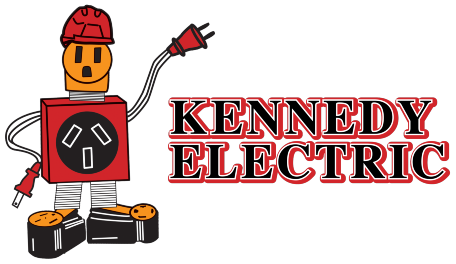IS ALUMINUM WIRING DANGEROUS?
Many houses built in the 1960s and 1970s have aluminum-based electrical wiring. While aluminum is an excellent conductor and is safe to use for wiring, trouble occurs in the connections.
Can aluminum wiring create a dangerous situation? Here’s what you need to know about aluminum wiring.
What is aluminum wiring?
Solid-conductor aluminum wiring was a replacement for the now-standard copper wires. Since aluminum is cheaper than copper, houses in the ’60s and ’70s were built with aluminum installations to cut down on costs while retaining the usefulness. Aluminum is a great conductor, and homes with these installations can still be seen today and are in excellent condition.
What’s wrong with aluminum?
Aluminum can safely conduct electricity throughout the house, but it expands much more than copper when heated, such as when electricity passes through the wire. Once the wire expands, there’s a chance it may lose connection with the terminal screw and expose the metal underneath to the air. This exposure can cause the connections to rust and corrode, which in turn causes a loss in conductivity, reducing the wiring’s effectiveness.
When this happens, the aluminum wires get hotter due to the increased resistance. The rising heat causes the wires to bend out of shape even more and exacerbates the problem. This positive feedback loop can become excessive over time and cause severe issues and damage to the house if not kept in check.
Is aluminum wiring dangerous, then?
If the connections between the wires and outlets continue to deteriorate, yes, they can be dangerous. In some instances, the excessive heat can ignite the surrounding material. In other cases, the electricity will try to arc between loose connections as it attempts to close a circuit.
According to the U.S. Consumer Safety Commission, homes with aluminum wiring are 55 times more likely to have one or more connections that pose a severe fire hazard. Aluminum wiring installed before 1972 should be repaired or replaced entirely to remove the associated risk.
How to tell if you have aluminum wiring
Any home built in the ’60s or early ’70s likely has aluminum wiring running through it. The best way to make sure is to check the markings on the cables’ plastic sheath. Manufacturers label aluminum wiring cables with “Al” or “Aluminum” every couple of feet.
What to do about it?
The best way to reduce the fire hazard is to replace the wiring entirely. For most homeowners, this is a costly solution that is cost-prohibitive. Luckily, since aluminum wiring problems lie at the connections, a technician can replace the connector points with higher-grade copper models that don’t degrade and provide a resistance-free bond.
If you can’t access the cabling inside the house, don’t hesitate to give a professional electrician a call. Their technicians will know the safest ways to check for old cables and determine whether they need to be replaced. Contact Kennedy Electric today for a quote and a thorough inspection of the house.
Kennedy Electric is a reliable full-service electrical company serving residential and commercial customers in Citrus, Hernando, and Pasco Counties. We offer electrical remodeling, electrical repair, circuit breakers, electric panel installations, electric panel repair, electric panel upgrades, new construction electrical, and residential wiring services. Call today at (352)799-3434.


